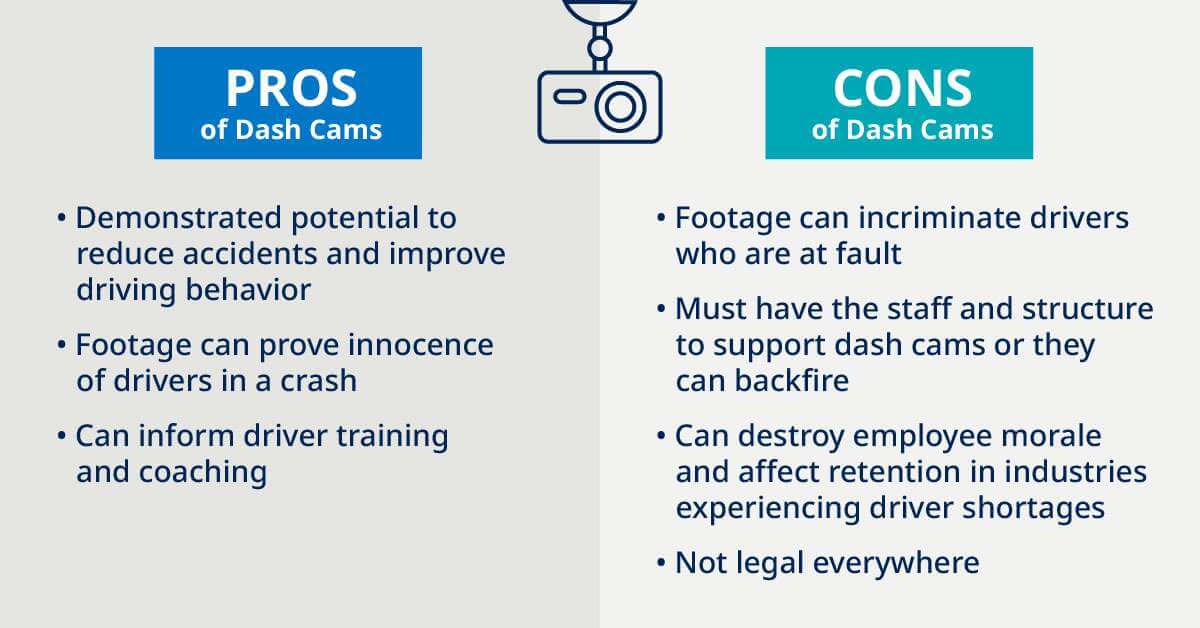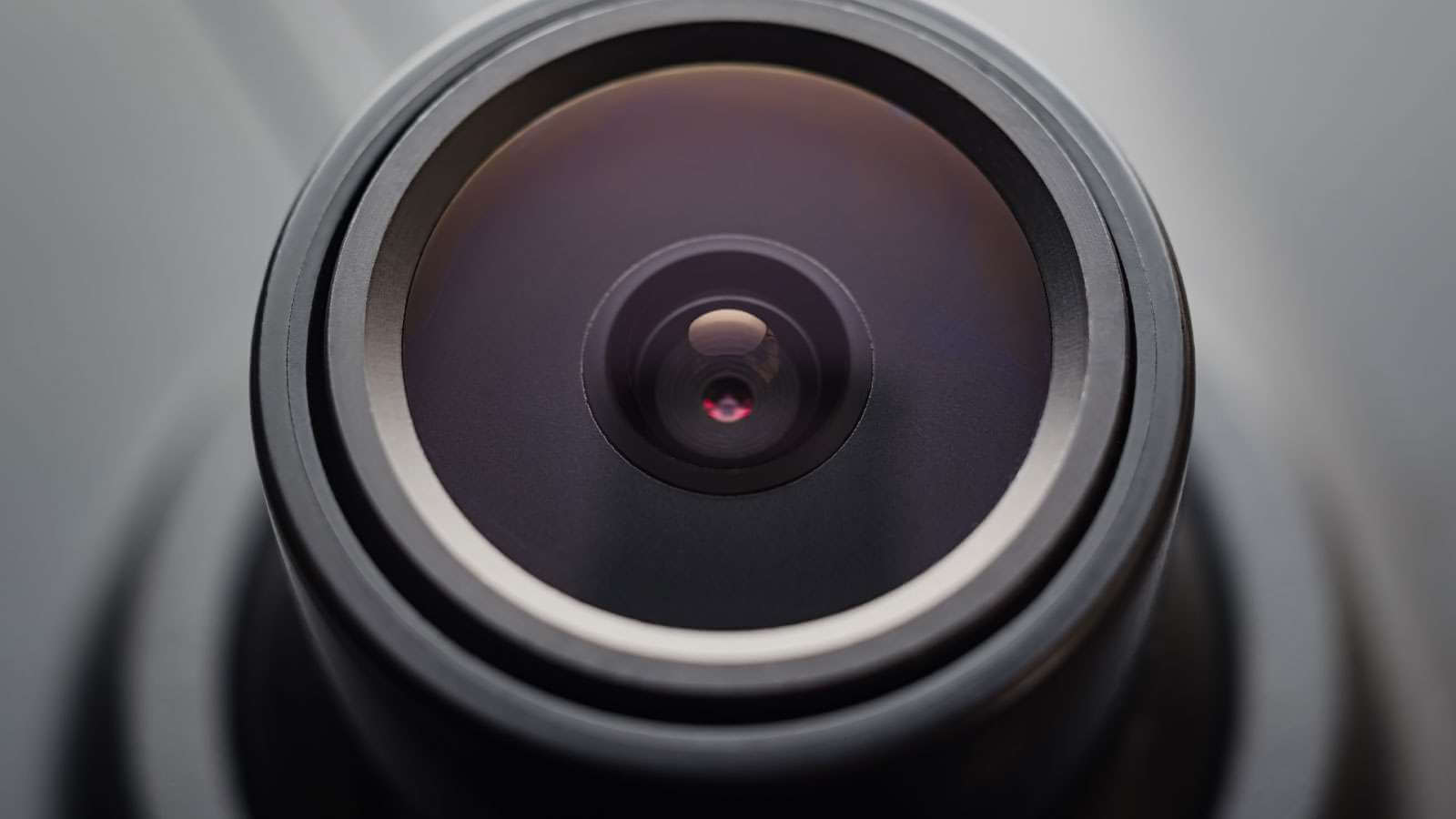Key takeaways:
- Decision makers should weigh dash cam pros and cons before adding dash cams to their fleet safety toolbox.
- Fleet dash cams pointed at the driver’s seat can leave a driver feeling distrusted and resentful of the employer supposedly looking out for their welfare.
- Not all dash cam footage works to a company’s benefit.
- Contextual mobility management can supplement a fleet dash cam program or replace it in cases where the administrative burden is too high.
Imagine being afraid to scratch your nose, rub your eye, or take a sip of water. This is the mentality drivers describe as dash cams evaluate their every move. “I’m afraid to move my hair out of my face, you know?” said one Oklahoma driver. “Because we’re going to get dinged for it.”
Fleet dash cam safety initiatives come from a noble place: wanting to protect employees, companies, and the communities they serve. In fact, in a pilot with Amazon, “accidents dropped by 48%, stop-sign violations dropped by 20%, driving without a seatbelt dropped by 60%, and distracted driving dropped by 45%.”
Those numbers suggest that the presence of dash cams can improve driver behavior. But at what cost? Dash cams also have the potential to open a Pandora’s box of issues that a company may not be aware of, or ready for. Let’s break down some pros and cons of fleet dashboard cameras.
Fleet Dash Cam Pros and Cons Summary

Pro and Con: Data Collection for Better or Worse
According to GPS Insight’s “Guide to Getting Drivers on Board with Dash Cams” eBook, 94-96% of vehicle crashes stem from human error. In addition, in car-truck crashes, cars are often responsible: The University of Michigan Transportation Research Institute discovered that 81% of the time car drivers were at fault versus 27% of truck drivers.
How can dash cams help? Visual proof of the events that lead up to an accident can absolve a driver, and a company, of liability: “Dash cam footage can help businesses defend their drivers’ driving reactions,” writes GPS Insight, “as it gives them almost-irrefutable video evidence.”
In the case of a car accident, dash cam footage can be more reliable than eye witness accounts or memory. For instance, in a 2021 study of a pedestrian death involving a truck, investigators first declared it an accident. However, based on dash cam footage, the pedestrian rushed intentionally into the middle of the roadway to be hit and died by suicide.
While moving at higher speeds, drivers experience tunnel vision, and their depth perception and peripheral vision worsens. Drivers traveling at 60 mph do not process as much of a wide angle as an outward-facing camera. Driving at night is another example – technology can capture more than the naked eye.
The Negative Side of Data Collection
Dash Cams Cut Both Ways
Consider the case of a driver who engages in distracted driving, road rage, or impaired driving and then causes a crash. A dash cam provides an incriminating recording, leaving a company on the hook for damages. The stark optics present a PR, insurance, and legal nightmare.
“Your own footage can potentially be used against you…In some states, if your dash camera documents that you’re exceeding the speed limit, you could be held partly liable if there’s an accident—even if the other driver was primarily at fault,” says Consumer Reports.
Another unintended consequence? Having to terminate good employees over footage – a scenario reported by customers seeking out an alternative to dash cams. Let’s say a company has outlined a driving policy that drivers regularly violate. Maybe drivers softly bend the rules rather than break them.
When the company installs dash cams in its vehicles, it can’t turn a blind eye. In the name of properly enforcing policy, fleet managers may be put in a position of punishing or even firing some of its best drivers. Worse, industries that employ drivers are having issues with retaining their talent as it is.
Administrative Burden
The scenario above involves a comprehensive policy, but not everyone has a policy or the infrastructure in place to roll out dash cams – and that’s a problem. Fleet Safety Geeks podcast guest and lawyer Clifford Mendolsohn explains, the technology “is a bit of a double edged sword from a legal perspective…it’s so important to have the necessary personnel and support because the amount of data that is generated and that can be taken out of context in a lawsuit is tremendous.”
An expert made a similar point during TRUCE’s webinar on nuclear verdicts. Lawyer Joe Fried explained how important it is for companies to have documented safe driving policies, training, and enforcement to demonstrate their commitment to safety over time.
There has to be a written policy that companies monitor and enforce.
Dash cams (or any effective safety program for that matter) is not “set and forget.” Dash cam and telematics technology require dedicated staff so that companies can stay on top of the data and use it for supervision and discipline.
Staff have to administer a fleet dash cam system: reviewing footage (or AI interpretations of footage), following up on unsafe driving events, near misses, and accidents. Otherwise juries and the public could see a company as negligent. Thus, companies need to consider whether they have the bandwidth to support a dash cam-informed safety program.
Con: Illegal in Some Areas
On top of the aforementioned legal issues, dash cams are not legal in all countries, Canadian provinces, or US states. Privacy concerns have led some areas to deem them legal under certain conditions or completely illegal. Consumer Reports adds that some states do not allow cameras to record someone in a private space (i.e. inside a vehicle) without consent.
Pro: Training Opportunities
In the case that a company has legal grounds and the bandwidth to have a fleet dash cam safety initiative, dash cams facilitate educational opportunities. Fleet managers can use the technology to improve driver safety. “These cameras continually record video and provide evidence-based opportunities for driver training,” says the National Surface Transportation Safety Center for Excellence.
Con: Employee Morale and Retention
“Put a camera in your house, and I will put one in my truck.”
Invasion of Privacy
Knowing you’re on a live stream being watched in real time might make you less likely to check social media on your cell phone. It could even save your life. But how much more likely would you be to resent your employer or quit?
Although dash cams benefit drivers – from keeping them and those around them safe to exonerating drivers in case of an accident – many drivers take issue with them. Even drivers who don’t break rules resent surveillance.
GPS tracking or outward-facing cameras are one thing, but inward-facing cameras take Big Brother to a whole new level. In a survey by Truckers News, over 90% of truckers disliked inward-facing dash cams.
“It’s an invasion of privacy…it’s all about control. Yes, it may help a driver once in a while, but the company uses them for their benefit. That truck is also some drivers’ homes,” commented one driver. Another added, “Put a camera in your house, and I will put one in my truck.”
Amazon drivers in a separate article agreed about the invasion of privacy. They mentioned that cameras would film them trying to manage very real needs like going to the bathroom and changing adult diapers.
Frustrating Working Conditions
Inward-facing cameras run by artificial intelligence can also mistake normal behavior (taking a sip of water, changing a radio station) for poor driving behavior. Amazon drivers said that the dash cam system provided no margin for error and sent distracted driving notifications at inaccurate times. Additionally, they expressed concerns about how dash cams affected their productivity.
Experts at the American Trucking Association anticipate a growing driver shortage that could surpass 160,000 in 2031. They estimate that the industry must recruit almost 1.2 million new drivers over the next decade. Given the forecast and end user insights above, companies may want to consider employee experience and morale when rolling out dash cams in order to retain and recruit more drivers.
Conclusion: Find the Proactive Strategy that Works for Your Organization
The goal of installing dash cams in company vehicles is to reduce distracted driving and other non-compliant behaviors – and ultimately save lives. And certainly, dash cam programs yield results.
However, dash cams capture a driver’s unwanted behavior; they don’t actively stop that behavior. They make a record of it, which can work for or against a company.
As detailed in “Kick Distracted Driving to the Curb and Promote a Safer Workforce,” a TRUCE eBook: “cameras only document; they don’t solve or prevent mobile device use on the road. It’s like letting a friend who has been drinking drive. Is it better to let him get behind the wheel with a camera in his car or not let him drive under the influence in the first place? The wiser choice would be to supplement camera use with a more preventative solution.”
Contextual Mobility Management (CMM) software is such a solution. It is proactive rather than reactive, allowing companies to enable or disable apps and programs based on contextual cues – and with no intrusion to the driver. Dash cams have their place, but they aren’t a catch-all solution. Let us know if you’d like to explore how CMM could supplement your dash cam program or other fleet safety initiatives.

